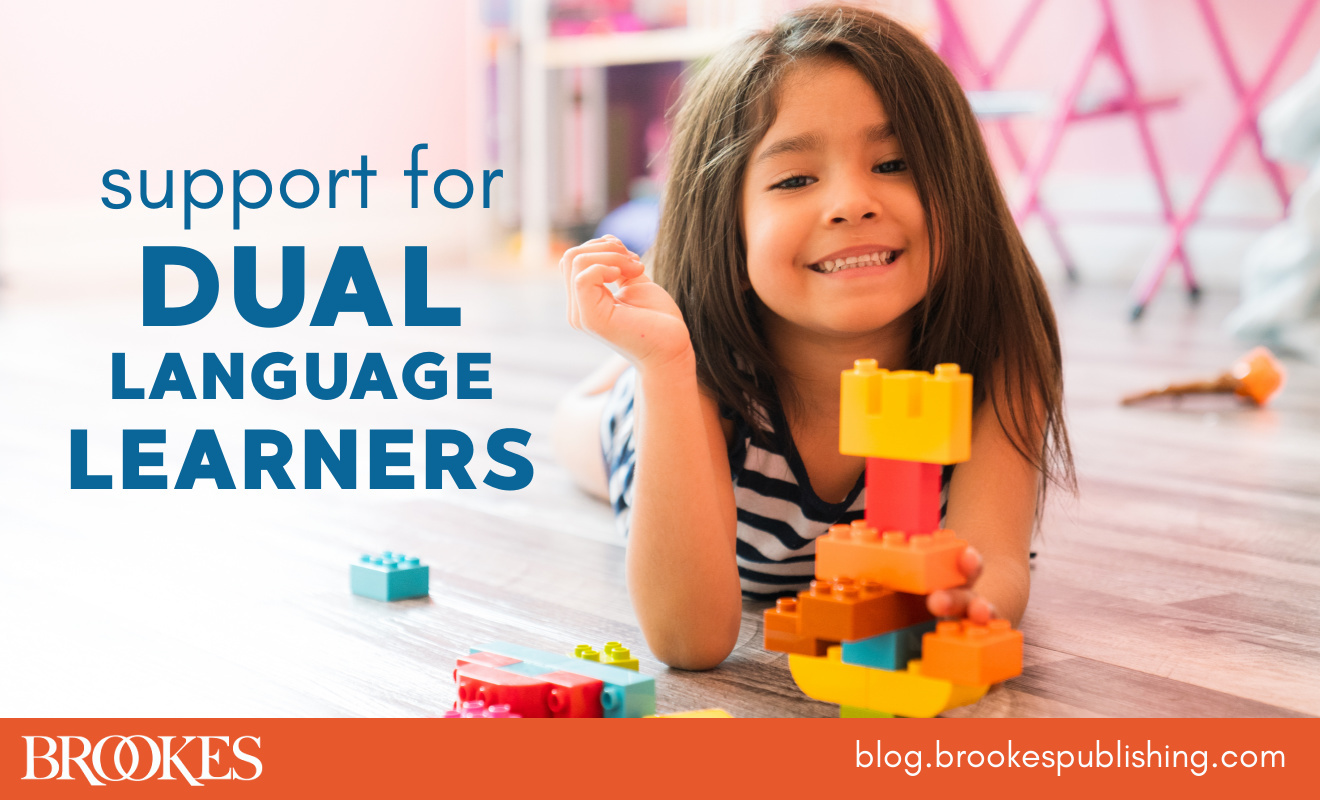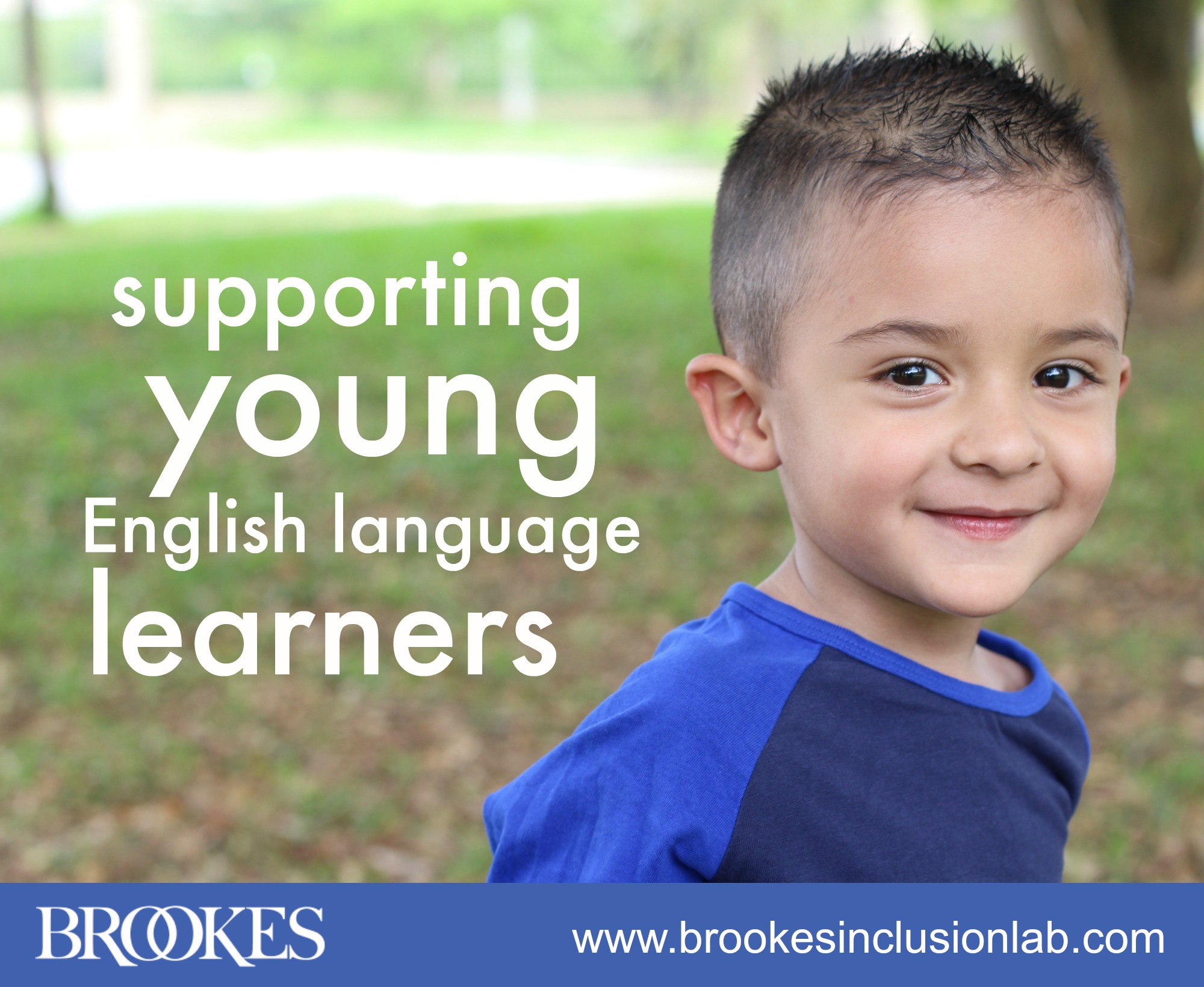 Early childhood teachers are welcoming more and more dual language learners into their classrooms—a trend that’s likely to continue. Consider these statistics reported in Assessing Spanish–English Bilingual Preschoolers by Sandra Barrueco & colleagues:
Early childhood teachers are welcoming more and more dual language learners into their classrooms—a trend that’s likely to continue. Consider these statistics reported in Assessing Spanish–English Bilingual Preschoolers by Sandra Barrueco & colleagues:
- The numbers of young linguistically diverse children are growing more rapidly than the overall student population.
- Linguistically diverse or dual language children now comprise 20% of the school-age population nationwide.
- The most marked increases are being charted in states like South Carolina, Kentucky, Indiana and Tennessee—areas that haven’t historically served a large dual language population.
- As of 2006, 27% of children enrolled in Head Start lived in homes where English was not the predominant language spoken, and 43% came from homes where a secondary language other than English was in common use (Administration for Children and Families, 2006, 2009).
Clearly there’s a need for early childhood educators to support the rapidly expanding demographic of dual language learners. With a little planning, you can fold effective strategies into the whole school day to support children’s academic and social development.
Try incorporating these suggestions at five key points of the day: during classroom set-up, circle time, story time, activity time, and in classroom conversations.
Classroom set-up
Being thrust into a new classroom without the familiar cultural and linguistic touchstones of home can be an alienating experience for dual language learners, which makes promoting an inclusive, culturally diverse classroom environment especially important. To make your classroom a comfortable, supportive place for dual language learners, use the following suggestions, adapted from The New Voices/Nuevas Voces Guide to Cultural & Linguistic Diversity in Early Childhood by Dina C. Castro & colleagues:
- Diversify play materials. Your classroom materials should be chosen with cultural and linguistic diversity in mind. Stock your classroom library and play areas with books, toys, dress up clothes, and pretend food that will make dual language learners feel at home, pique other children’s curiosity about diverse cultures, and stimulate cooperative learning.
- Place key words in the home language of dual language learners on signs and other classroom materials. Label physical features such as doors, shelves, and windows in more than one language, and post the names of colors, numbers, and months in multiple languages.
- Ask for input from parents and caregivers of dual language learners to ensure that you’re selecting appropriate books, materials, and cultural objects.
- Avoid cultural bias. Although it’s critical to select culturally diverse materials, it’s equally important to avoid books and materials that reinforce stereotypes or encourage cultural bias. Be sure that classroom materials not only depict members of different cultural groups, but also show them participating in a wide range of activities and customs.
This excerpt from The New Voices/Nuevas Voces Guide gives you practical tips on selecting culturally and linguistically appropriate materials for your classroom and avoiding materials with cultural bias.
Circle time
Circle time is usually one of the few periods during the day when everyone in the classroom is gathered together. Use this critical time to stimulate language development and strengthen social connections among all students. Make circle time a great learning experience for your linguistically diverse students with these ideas, adapted from One Child, Two Languages by Patton O. Tabors:
- Keep a routine. Most children appreciate knowing what’s expected of them, but daily routines are even more beneficial for dual language learners. By sticking to a predictable order of events—for example, roll call, discussion of the calendar, weather report, and then story time—you’ll give dual language learners a reassuring routine and a better chance to learn.
- Respond as a group. Encourage children to respond in unison when discussing the daily theme or engaging in other participatory circle time activities. It’s important to create situations where dual language learners can comfortably practice new words without feeling singled out.
- Make the most of music. Music is wonderfully engaging for young children and a perfect learning tool. Try incorporating familiar phrases in other languages into your classroom songs, and choose songs with predictable words and movements. The repetition will give dual language learners a chance to catch on and expand their vocabulary without feeling pressured or anxious.
Take a closer look at the learning and bonding opportunities during circle time in this clip from Supporting Cultural and Linguistic Diversity in Early Intervention and Early Childhood Special Education, a professional development DVD by Deborah Chen & colleagues.
Story time
Maintaining the interest of a roomful of children during story time is always tricky, and developing a book-reading routine that works for all of your students may take some trial-and-error. Here are some story time tips and considerations to keep in mind, adapted from One Child, Two Languages and The New Voices/Nuevas Voces Guide:
- Choose carefully. Simplicity is key. Choose oversized books with fewer words and large and plentiful illustrations. Select predictable books with simple, repetitious phrases that are more likely to engage a dual language learner.
- Short sittings. Dual language learners may find it challenging to sit for long periods of time listening to a book they don’t fully understand. Keep books short or break up longer books into multiple parts.
- “Talk” the story. If you have a book with beautiful illustrations but the text is too complex, you can talk your way through a modified version of the story that everyone in the class is likely to follow.
- Multiple readings. Reading children’s favorite books more than once allows dual language learners to build comprehension with each successive listen, making new words and concepts much easier to understand.
- First language first. Have someone “pre-read” the book to dual language learners in their home language before the larger group reading in English. This strategy will help them follow the second reading and confidently build their English vocabulary.
See how teachers can use book-reading time to engage and education students, in this clip from One Child, Two Languages in Action DVD
Activity time
When you’re planning classroom activities, think about ways you can make dual language learners feel more at home, promote their language and social development, and provide every child with a fun opportunity to explore new cultures. Try the following tips, adapted from Supporting Cultural and Linguistic Diversity in Early Intervention and Early Childhood Special Education and The New Voices/Nuevas Voces Guide:
- Cook a new food. Work with your students to prepare a food item associated with a different culture. Talk about the ingredients, preparation method, and cultural significance of the food. Use key words to describe the different smells, tastes, and textures that the children are experiencing. It’s a great way to help all students broaden vocabulary and learn measurement concepts while increasing awareness of other cultures.
- Use math concepts. Give students a chance to practice their math skills by counting and sorting familiar cultural objects that might be of significance to a dual language learner in your classroom.
- Explore diversity during arts and crafts. Provide children with a wide spectrum of crayons, paints and different colors and shades of paper to represent various skin tones. Students could also be given play dough to fashion different pretend foods from different cultures.
- Keep groups small. Mix large-scale group activities with smaller group sessions and one-on-one interactions, since dual language learners may feel less comfortable interacting in large groups.
See an early childhood teacher making jap chae, a traditional Korean noodle dish, in this clip from Supporting Cultural and Linguistic Diversity in Early Intervention and Early Childhood Special Education.
Classroom conversations
Early childhood classrooms are alive with talk. Daily conversations are one of the most effective tools for making dual language learners feel like an integral part of the classroom. The following suggestions, from One Child, Two Languages and The New Voices/Nuevas Voces Guide, will help you use everyday talk to connect with dual language learners and boost their language skills:
- Buttress communication. When speaking with dual language learners, reinforce what you’re saying with a hand gesture, action or pointed gaze. By “doubling the message,” you help clue the child in to what you’re trying to communicate.
- Use repetition. Repeating a sentence or even a single word is an easy way to reinforce language learning. For greater comprehension, try putting verbal emphasis on key words, or place the key word near or at the end of the sentence.
- Talk about current activities. Talking about what’s going on in the moment, or narrating events while you complete an activity with a child, is a good way to help them relate specific words with a particular situation.
- Allow them to speak their first language. Letting dual language learners speak in their home language is not detrimental to the process of learning a second language. Always make the child feel that their home language and culture are valued.
This excerpt from One Child, Two Languages gives you more tips on how to use daily talk and conversations to create a more inclusive classroom atmosphere.
***
The prospect of supporting dual language learners during the whole school day doesn’t have to be an intimidating one. Keeping families involved as you create individualized strategies, use these ideas to start making your classroom a comfortable, inclusive place where dual language learners thrive along with the whole class.



Write a Comment
Your email address will not be published. Required fields are marked *
Post a Comment